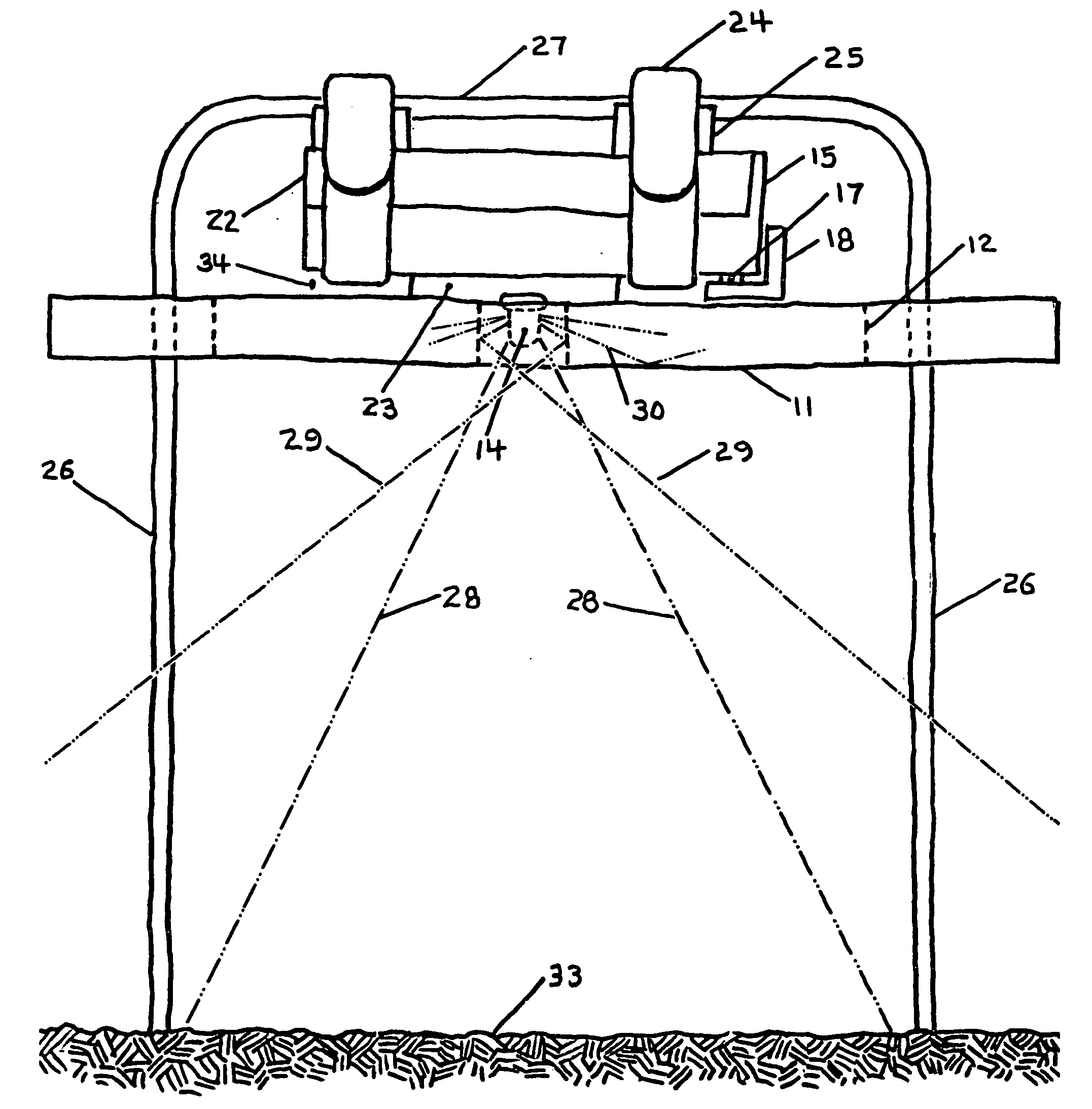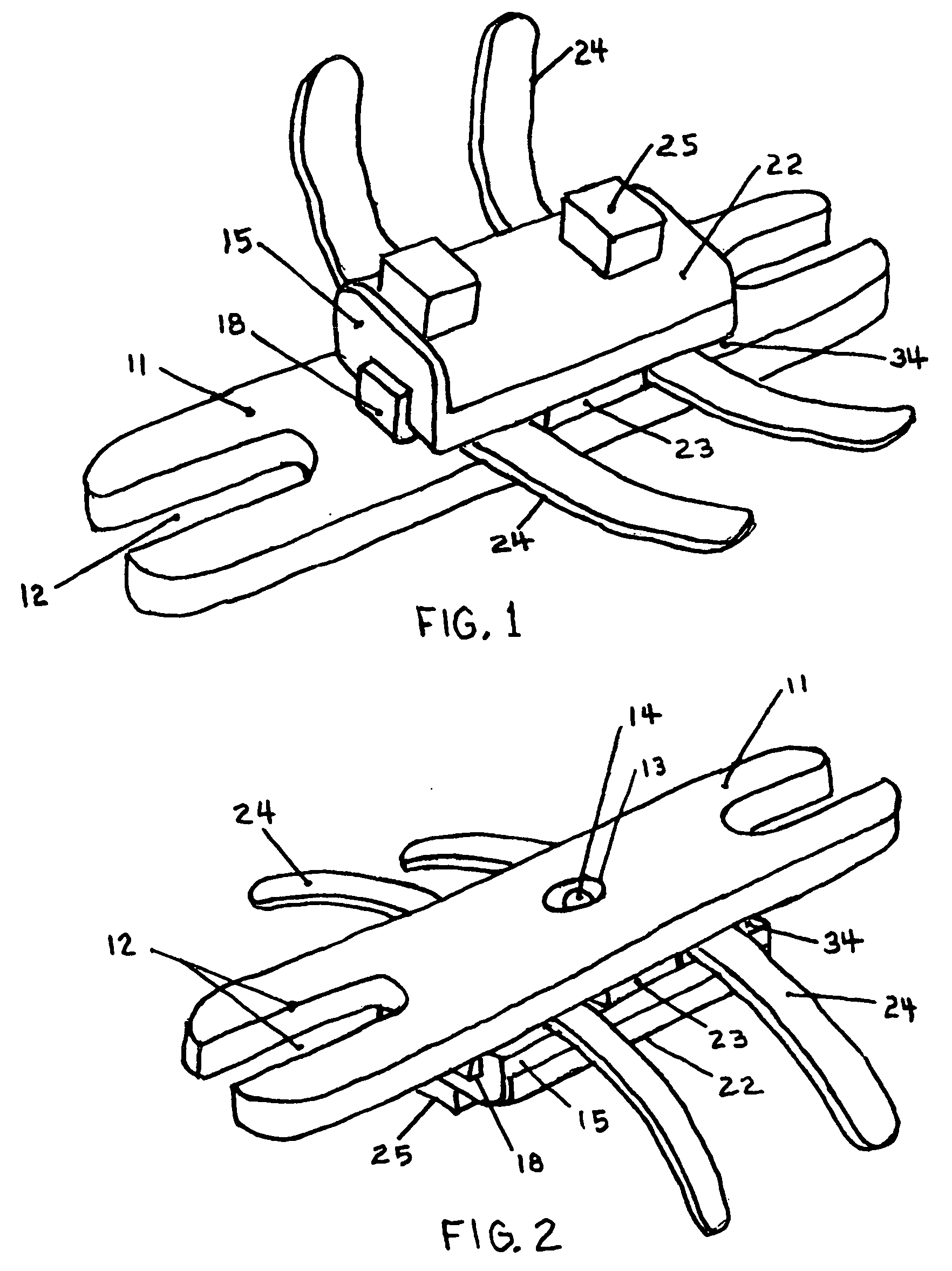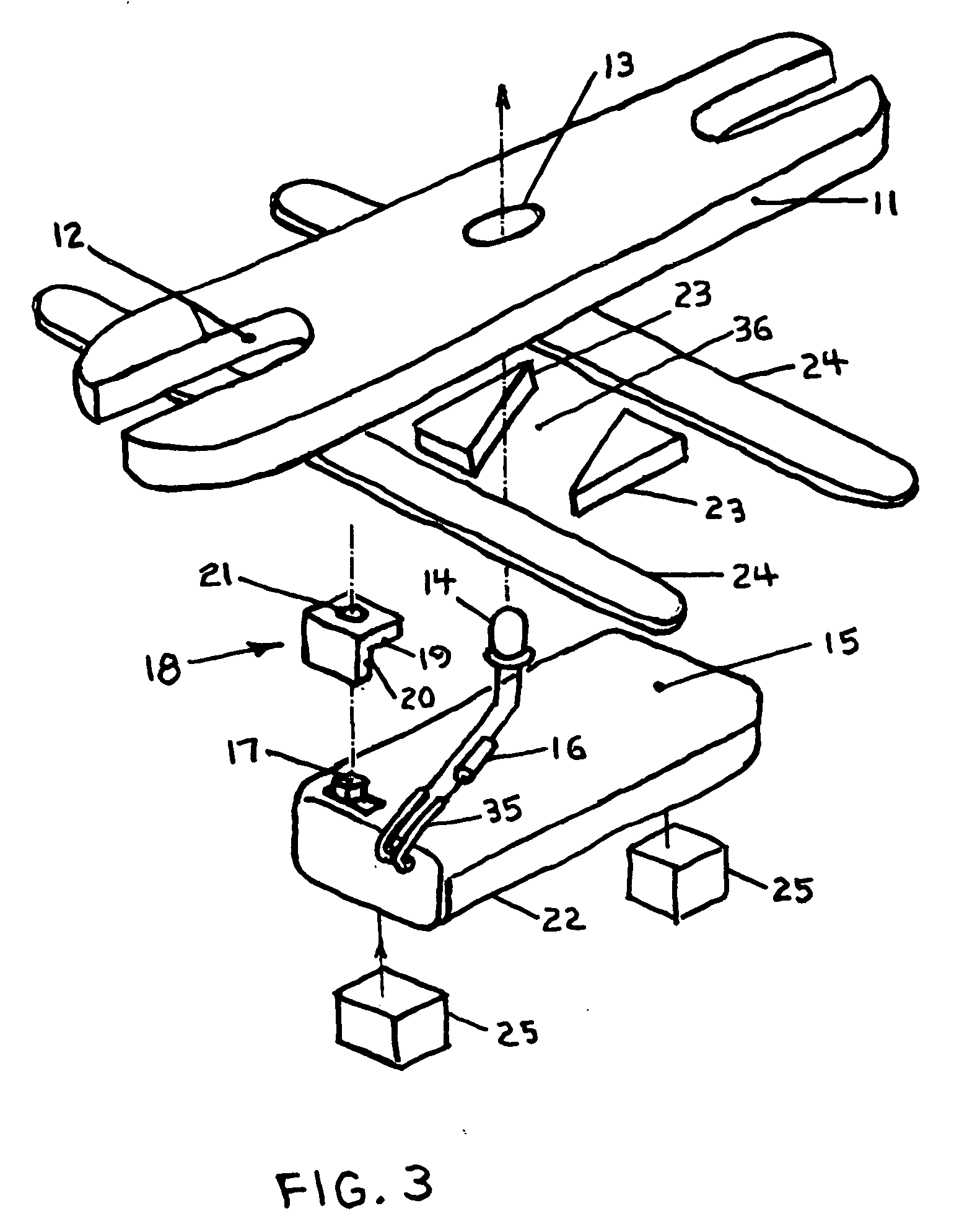Universal croquet wicket lighting unit
a wicket lighting and wicket technology, applied in the field of croquet, can solve the problems of affecting the play of yard croquet, affecting the play of ball sports, etc., and achieve the effects of long service life, excellent impact resistance, and high luminosity
- Summary
- Abstract
- Description
- Claims
- Application Information
AI Technical Summary
Benefits of technology
Problems solved by technology
Method used
Image
Examples
first embodiment
A FIRST EMBODIMENT
[0074]FIG. 1 and FIG. 2 are perspective views of a first preferred embodiment of a universal croquet wicket light unit constructed in accordance with the claims of my invention. This presents an overview of how components are arranged on the mounting plate to form the unit. In particular, this shows how: battery power 15 is provided and switched on and off 18; how the light emitting diode 14 is positioned; how the retaining straps 24 and friction pads 25 are configured and positioned relative to one another and the overall unit; and, the relationship of these components to the mounting plate 11. The circuit providing power to the light emitting diode consists of the diode, the batteries, the switch, and a current limiting resistor. How these components are typically positioned is shown as an exploded perspective view in FIG. 3.
[0075] A battery holder 15, comprising of an internally integrated switch, a switch knob 17 that presents itself externally to the battery ...
second embodiment
A SECOND EMBODIMENT
[0079] A second preferred embodiment of the wicket light unit is different from the first embodiment, only due to a slight difference in the battery holder unit incorporated in the embodiments. This difference is characterized by the location for the switch knob on the battery holder. In the first embodiment, the switch knob 17 was located on the side opposite to the battery cover 22. It is possible to utilize a battery holder with the switch knob located either on the same side as, or on a side adjacent to, the battery cover. This eliminates the slide actuator 18 mechanism described in the first embodiment since a user would have direct access for actuating a switch knob so located. Battery holders such as described in this second embodiment are usually less compact, and more expensive to manufacture; this is why the first and third embodiments do not incorporate this style of battery holder, even though an additional switch actuation mechanism is required. All o...
third embodiment
A THIRD EMBODIMENT
[0080]FIG. 9 illustrates aspects of a third preferred embodiment of the wicket light unit. This embodiment is different from the first embodiment, only in that the separation space between the battery holder and the mounting plate, needed for mounting components, is provided in a different fashion than in the first embodiment. In this third embodiment, separation space and component channels are created as recesses in the mounting plate. In the first embodiment, standoff spacers are employed exclusively to create the separation space and component channels.
[0081] Whereas the invention has been shown and described in connection with preferred embodiments thereof, it will be understood that many modifications, substitutions and additions may be made that are within the intended broad scope of the claims. There has therefore been shown and described three such embodiments based on the claims in my patent, and which accomplishes all the stated objectives pertaining to...
PUM
 Login to View More
Login to View More Abstract
Description
Claims
Application Information
 Login to View More
Login to View More - R&D
- Intellectual Property
- Life Sciences
- Materials
- Tech Scout
- Unparalleled Data Quality
- Higher Quality Content
- 60% Fewer Hallucinations
Browse by: Latest US Patents, China's latest patents, Technical Efficacy Thesaurus, Application Domain, Technology Topic, Popular Technical Reports.
© 2025 PatSnap. All rights reserved.Legal|Privacy policy|Modern Slavery Act Transparency Statement|Sitemap|About US| Contact US: help@patsnap.com



